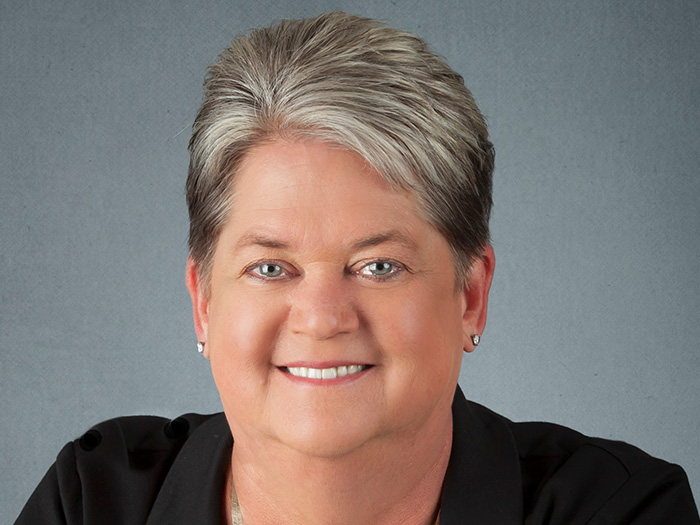The Best Pain Rx Doesn’t Come in a Bottle

Opioid prescriptions skyrocketed in the 1990s, when the drug was first marketed as the “problem solver” to chronic and acute pain. Doctors bought into what manufacturers were selling. Overprescribing went off the rails. Patients suffered.
 The rise in prescription opioid-related overdose deaths really began in 1999, according to CDC data. A second wave of rapid increases in overdose deaths plagued the U.S. in 2010, this time with a rise in heroin abuse. Synthetic opioids, like fentanyl, took off in 2013.
The rise in prescription opioid-related overdose deaths really began in 1999, according to CDC data. A second wave of rapid increases in overdose deaths plagued the U.S. in 2010, this time with a rise in heroin abuse. Synthetic opioids, like fentanyl, took off in 2013.
The need for better pain management — without opioids whenever possible — remains a core issue for the National Comp conference, and a topic you’ll find on this year’s program agenda.
Dr. Michael Lacroix, licensed psychologist, medical director, The Hartford, will share his insights at National Comp 2022 alongside Dr. Nikki Wilson, director, clinical product & pharmacy solutions, Mitchell; Dr. Dorothy Riviere, chief clinical officer, Bardavon Health; and Dr. Mark Williams, medical director at The Hartford, during the session “Pain Management that’s Easier to Swallow: Non-Pharmacological Alternatives.”
Lacroix and Williams shared some of their thoughts with Risk & Insurance in advance of the presentation.
The harrowing history of the opioid epidemic cannot be understated; an average 100,000 people die every year, the National Center for Health Statistics reported. Thirty-five billion dollars in health care costs have been spent trying to fight the epidemic, and an additional $14.8 billion in criminal justice costs have been spent on drug-related crime and theft.
The workers’ compensation industry is doing its part, trying to limit the number of opioid scripts written for injured workers.
“The number of the proportion of scripts issued per claim in workers’ comp is down about 10%,” said Dr. Michael Lacroix, licensed psychologist, medical director, The Hartford. He noted the pandemic has certainly impacted that number in recent years, but overall, regulators, doctors and prescribers are paying attention to the number of scripts written.
Workers’ comp is also tuning in to other pain treatment modalities as a means to curb the rate at which opioids are introduced into a claim. The biggest contender: movement.
The Magic of Movement: 3 Ways Movement Therapies Are Proving Their Worth Over Medication
When looking at an injury, Dr. Mark Williams, medical director, The Hartford, said there are a number of benefits movement can have on recovery.

Dr. Mark Williams, medical director, The Hartford
“When you have a musculoskeletal injury, a lot can be at stake,” he said. Musculoskeletal injuries impact three primary areas — the joints, the muscles that move them and then connective tissues like ligaments and tendons. And all three impact each other’s recovery.
“For example, if there is a muscle spasm, that will immobilize the joint and that tends to persist joint pain. The joint is restricted. When you apply motion, you start to restore normal motion to the joint,” Williams said.
Physical therapy, chiropractic manipulations, massage and acupuncture are just some of the therapies being utilized today. Each has properties to hone in on the injury and give the injured worker the tools needed to bring mobility back while also strengthening the muscle and surrounding tissue.
“These physical/manual medicine modalities are very effective. Physical therapy, we know, restores function to injured tissues and muscles. Massage therapy can address inflammation that develops by actually, physically dispersing those accumulating fluids,” Williams explained. “Chiropractic’s role is about joint mobilization and joint manipulation. You restore normal biomechanics to the injured joint.”
The positive impact of movement doesn’t stop there; benefits of non-pharmaceutical interventions abound beyond the physical healing of the injury.
1) Incorporating a comprehensive plan of action using movement therapies instead of opioids can reduce mental health barriers for injured workers.
Mental health still faces stigmatization today, despite recent stressors, like the pandemic increasing anxiety and depression by as much as 25%, the WHO reported. More adults are feeling the pressures and health strains caused by mental illness, and injured workers are no different.
Take the pandemic out of the picture entirely, and an injured worker can still feel boughts of anxiety, depression and stress. They’re facing upheaval to their work life and home life due to injury. They’re likely facing financial strains if they are out of work. Plus, they’re entering the comp space usually for the first time, which can be confusing or overwhelming without having background knowledge of the industry.
At the core of it, they’re in pain.
It’s a lot of uncertainty to face, and mental illness can contribute to increased absenteeism and lost productivity, not to mention prolonging the claim. “Combined with substance abuse, mental health disorders cost employers between $80 billion and $100 billion in these indirect costs,” IRMI reported.
Prescribing an opioid to manage pain may seem like a simple fix, but studies show undiagnosed mental illness can increase the risk of an opioid use disorder.
The good news: Employers are acknowledging the need to address mental health.
“More employers are open to acknowledging mental health in the workplace,” Lacroix said. “That’s a big thing, because when you are open to recognizing it, people are more open to admitting it.”
Movement is a big proponent of mental health. Movement itself has been linked to improved circulation, mental clarity and mood — all important pieces to injury recovery. By adding in movement to address pain, it takes opioids out of the equation and has the injured worker focusing on rehabilitation versus solely pain management.
“Claims last longer when mental health issues are comorbidities, and in workers’ comp, treatment costs also go up significantly,” said LaCroix.
2) Movement therapies may be a bigger cost upfront, but they help eliminate long-tail opioid-related costs that can mount.

Dr. Michael Lacroix, medical director, The Hartford
When it comes to movement therapies, the upfront cost may look unappealing. A single physical therapy session could equal anywhere from $30 to $400, as an example, whereas an opioid prescription costs as little as one trip to the doctor’s office for the script.
“Oftentimes, there’s an assumption that because drugs are cheaper, you can save money by just prescribing medication. But if you look at the long-term, these movement strategies actually bring in a very nice return on investment,” Lacroix said.
The cost to get a single person the help they need to combat an opioid addition can be upwards of thousands of dollars and can take years of treatment. For perspective, The National Institute on Drug Abuse broke down the costs per type of opioid treatment:
- Methadone treatment, including medication and integrated psychosocial and daily medical support services can cost on average $6,552 per person annually
- Buprenorphine treatment, including medication and twice-weekly visits can cost an average $5,980 per person annually
- Naltrexone treatment is estimated at $14,112 per year
Williams pointed to a study conducted by WCRI in 2020, “The Timing of Physical Therapy for Low Back Pain: Does It Matter in Workers’ Compensation?” in which it found that patients who received physical therapy later in injury recovery had 24% higher medical costs and 58% longer temporary disability duration.
A WCRI webinar released this year, “Patterns and Outcomes of Chiropractic Care,” found that indemnity payments were 35% lower for claims that received chiropractic care and temporary disability duration was 26% shorter.
“Both studies demonstrate that there are fewer medical interventions, including use of opioids, when physical medicine and movement are used in these claims,” Williams said.
3) Movement addresses the root cause of the pain instead of masking symptoms like most medications.
The reason opioids grew in popularity in the 1990s is because they worked as advertised: They eliminated pain for those who took them … so much so, that many began to rely solely on them to take away their pain. But studies have shown that continued use of opioids can actually increase pain.
“It is possible for opioids to lead to chronic pain because of chemical and structural changes in the nervous system, known as central sensitization, as a response to prolonged durations of use,” said Williams.
Movement works differently. It’s not there to mask the pain but instead give injured workers the tools and exercises needed to address their pain head on.
That’s because the right movements encourage an injured worker to gain strength right at the spot of injury.
Workers’ Compensation Professionals: Want to Know More About Alternative Therapies?
Movement therapies like physical therapy, chiropractic manipulation or massage are just one alternative to opioids. But the list goes on when it comes to combating the epidemic. As Williams said, the workers’ comp industry is just getting started.
“We’re early in the game, and it’s one of the reasons why we’re constantly trying to raise awareness of these non-pharmaceutical interventions and these non-opioid interventions,” he said.
While you’re eagerly awaiting your trip to Vegas for National Comp, here’s a resource to learn more about new and innovative types of physical therapies workers’ compensation is starting to tune in to. Also, hear from session panelist Dr. Riviere prior to the conference about some of the latest workers’ comp trends of note.
If this topic is of interest to you, don’t miss out on Curt DeWeese, director and physical therapist for Atlas Injury Prevention Solutions, and John Rhyne, corporate EHS director for Rehrig Pacific Company, as they discuss how one company utilized physical therapy to reduce MSDs by 86%.
“These are not new concepts,” Williams added, “but the appreciation for them is gaining through the validation of scientific research. We want to get providers aware of the services that are out there, have regulators and payers make these services available to the injured worker, and from there, I think we’ll start to see a great change.” &
Hear more from these physicians and other workers’ comp industry leaders at National Comp 2022 at Mandalay Bay in Las Vegas, Oct. 19-21.










